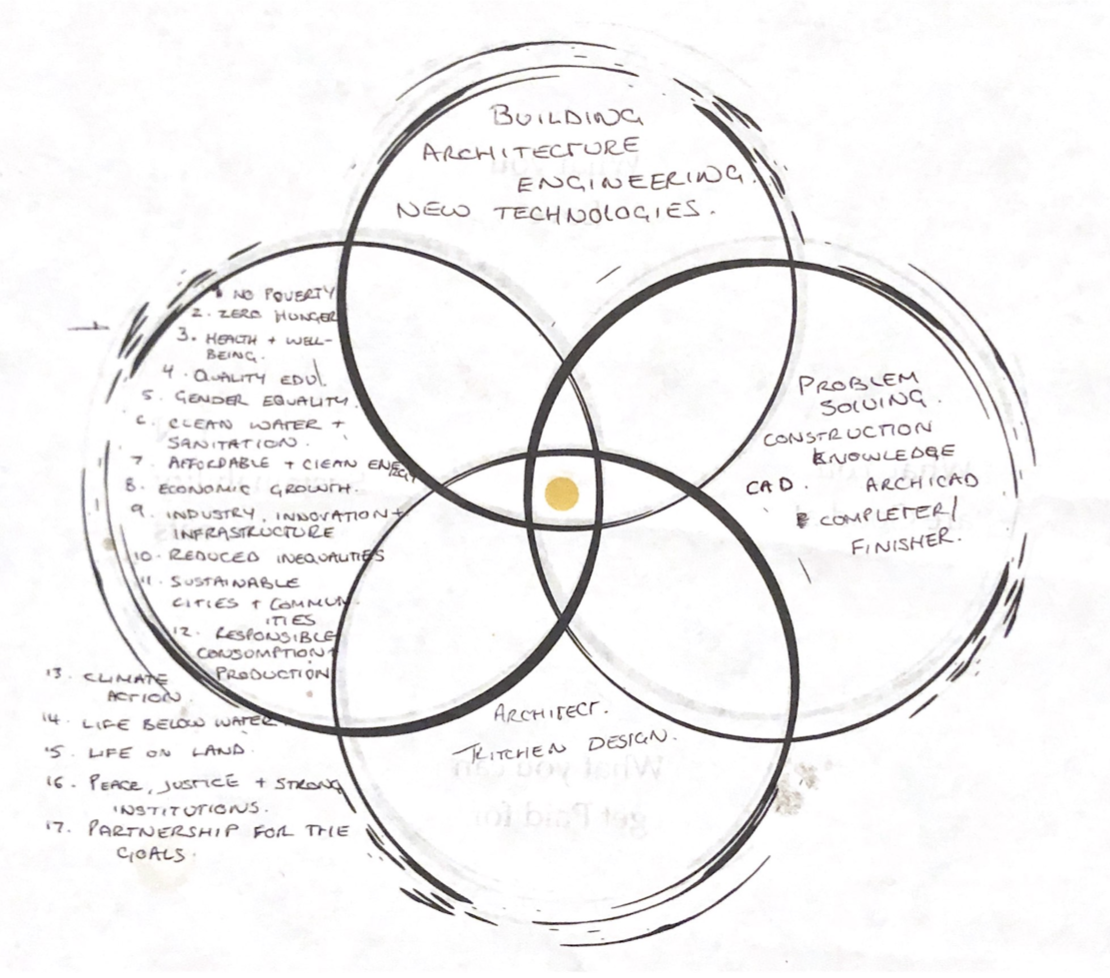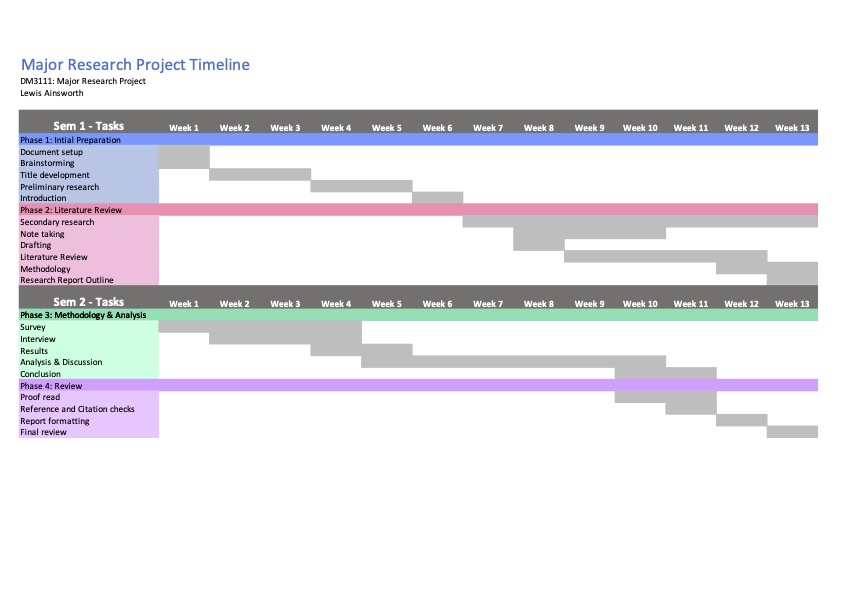I constructed a project timeline, as shown below, to ensure I dedicate enough time to each aspect of my dissertation as this will effectively allow me to produce a high standard of work. As shown in the timeline, the initial preparation tasks, such as the brainstorming and title development, only took a matter of 6 weeks due to their simplicity when compared with the literature review. The literature review fulfils a large section of any dissertation as it outlines and analyses the existing literature surrounding the given topic. Throughout semester 1 I proposed to continuously conduct secondary research, even after starting to draft my literature review, as this would ensure that I kept up to date with the existing and ever-changing literature. Ultimately, I dedicated 7 weeks to my literature, however, after reflection I feel I could have allocated more time to my research report outline as phase 2 took significantly more time than planned running closer to the deadline. This caused some initial frustration and stress and having experienced this I may have to adapt phase 3 and phase 4 of semester 2 to ensure this doesn’t happen again or to allow myself more contingency should any tasks be overrun.
For phase 3 of semester 2 I have devoted 11 weeks to finalise the methodology and analysis section of my dissertation. My conducting of research through the dispersal of surveys and completion of interviews should take no longer than 4 weeks as I feel this is enough time to collect the necessary data. Depending on the volume of responses, the data analysis and discussion section may take up a considerable amount of time due to the amount of data I will need to interpret. Therefore. I have allocated 6 weeks to produce several drafts that provide the correct overview and analysis of the collected results. With regards to phase 4, it is primarily associated with reviewing and mitigating any errors or mistakes prior to the final submission for this degree.

